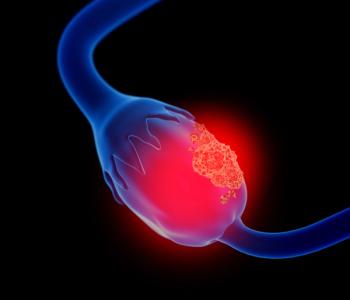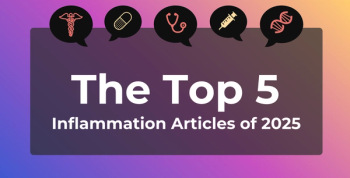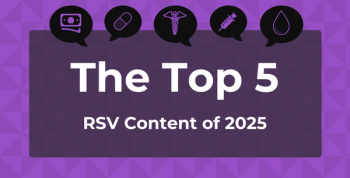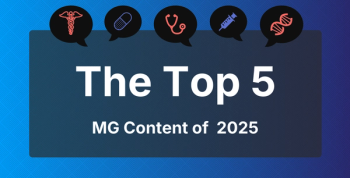
How Does Simultaneous Administration of Propranolol, Liraglutide Affect Patients With T2D and Cirrhosis?
In the first report of its kind, researchers examined the combined effect of liraglutide and propranolol on the hearts of patients with both type 2 diabetes and cirrhosis.
In the first study of its kind, researchers reporting in Diabetologia conducted an observational case
Due to selective inclusion criteria, many individuals with alcoholism are often
This oversight poses a significant problem as alcohol-related deaths in the United States more than
Glucagon-like peptide-1 (GLP-1), a naturally occurring incretin compound, acutely increases heart rate due to stimulation of the sympathetic nervous system. GLP-1RAs are
Contrarily, b-blockers are frequently prescribed to prevent bleeding from esophageal varices, in particular for patients with cirrhosis—a chronic liver disease often caused by alcohol consumption. However, b-blockers lower heart rate by blocking the effects of the hormone epinephrine (adrenaline). Clinicians often aim for a target of 55 to 65 beats/min in individuals receiving the medication, which is also used to
Study participants received an initial dose of 20mg of propranolol/day orally. The amount was titrated upward until the patient could not tolerate a higher dose, target heartrate was achieved, or a maximum dose of 160 mg/day was administered. The starting dose of liraglutide was 1.2 mg/day, administered subcutaneously. Liraglutide was titrated to 1.8 mg/day in obese patients.
All patients achieved a target heart rate before starting liraglutide treatment with a median of 62 beats per minute.
Over the course of 18 months, researchers evaluated patient heart rates and responses to the treatments. “After 3 months of combined treatment, the median heart rate increased and then remained relatively stable despite increases in the propranolol dose,” authors said. In addition, no increase in bleeding rate was observed.
Throughout the course of the study, 2 patients required hospitalization, 1 patient exhibited acute variceal bleeding, 1 experienced persistent atrial fibrillation, and 1 had paroxysmal supraventricular tachycardia.
However, due to the small sample size, researchers note the findings do not resolve the question of whether patients with diabetes should receive alternative treatment to prevent variceal bleeding.
After researchers verified heartrates of the remaining 15 participants were out of the optimal range, despite up titration of b-blockers, all individuals underwent elective variceal endoscopic band ligation.
Although liraglutide provided optimal control of blood glucose, A1C, and body weight, researchers found b-blockers had suboptimal effects on patients’ heart rate after they began receiving GLP-1RAs. During the study, 4 patients were switched to a different b-blocker, which did not lead to achievement of target heart rate in patients.
The underlying mechanism of the complication is unknown, but researchers hypothesize, “the a subunit (Gas) of the intracellular signaling protein Gs decreases when propranolol inhibits b-adrenergic receptors and increases when liraglutide stimulates receptors for GLP-1.”
Investigators conclude they are not convinced individuals receiving propranolol and liraglutide have worse outcomes than individuals who do not take GLP-1RAs for diabetes management.
In addition, the case report did not offer information as to whether these effects are specific to propranolol and liraglutide or are common in other drugs in each class. However, researchers did add dulaglutide at a dose of 1.5 mg/day to the treatment regimen for a single patient with T2D who was receiving propranolol to prevent variceal bleeding. They found “dulaglutide lowered the patient's hemoglobin A1c level, but it also increased the heart rate above the target range.”
This finding, along with switching 4 patients to a different b-blocker, are consistent with class effects. Authors note, “a class effect is suggested by recent findings that the mechanism for the increase in heart rate associated with GLP-1RAs involves direct stimulation of the cells in the sinoatrial node.”
Since 2009, a growing number of Americans have died from liver disease
Future case studies using claims databases may offer insights into how often this mechanism occurs and provide real world evidence as to how best to handle the condition in patients with T2D and cirrhosis.
Reference:
Vukotic R, Raimondi F, Brodosi L, et al. The effect of liraglutide on b-blockade for preventing variceal bleeding: A case series [published online May 25, 2020]. Diabetologia. doi: 10.7326/L20-0041
Newsletter
Stay ahead of policy, cost, and value—subscribe to AJMC for expert insights at the intersection of clinical care and health economics.







































